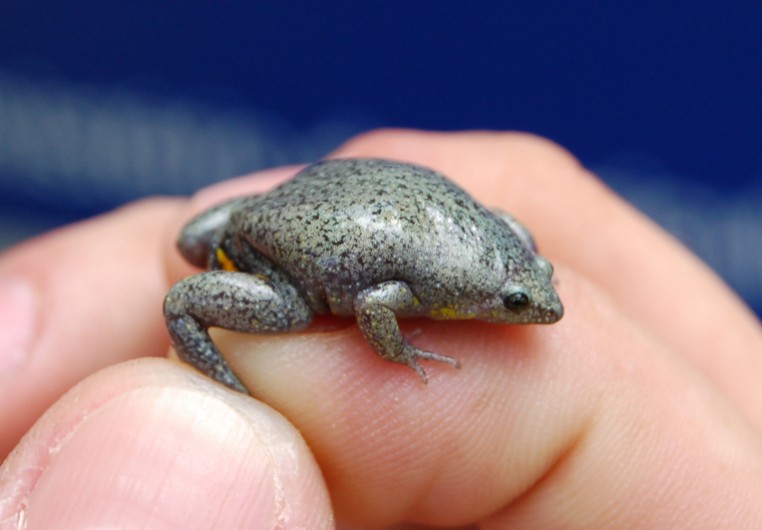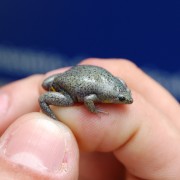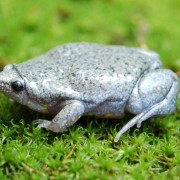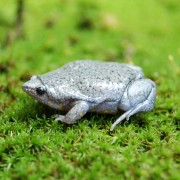Biodiversity
 Common Oval Frog
Elachistocleis ovalis | Schneider, 1799
Common Oval Frog
Elachistocleis ovalis | Schneider, 1799

Characteristics: Medium-sized species measuring 3.0cm to 4.5cm in length. It has a small, ovoid body, with a small, triangular head. Its color varies from dark gray to teal. These frogs have a yellow horizontal stripe in the region of the cloaca and a thinner, clearer stripe arranged longitudinally, from the cloaca to the head. It also popularly called cricket frog due to its singing resembling an sharp whistle or the nuptial song of crickets and grasshoppers.
Distribution: It is certainly spread throughout the São Paulo plateau; however, as it is hard to identify, its actual distribution is uncertain.
Habitat: Open formations, in savannas, field to forest formations on the edges of riparian and gallery forests, lakes, ponds, rivers, creeks, wetlands and swamps with plant coverage.
Habits: Crepuscular, nocturnal, and fossorial. It prefers low vegetation (grasses) near streams and puddles of water. It can perform "thanatosis" (play dead) to avoid predators.
Diet: Predominantly termites and ants whose nests it lives in.
Breeding: Oviparous; males vocalize partially submerged in puddles formed by the rains during the summer. Outside the breeding season, they remain buried a few centimeters deep in the ground.
UFRA: Species seen in Organic sugarcane fields, Wetlands with herbaceous plants, Fields in spontaneous regeneration, and in Drainage Ditches.






